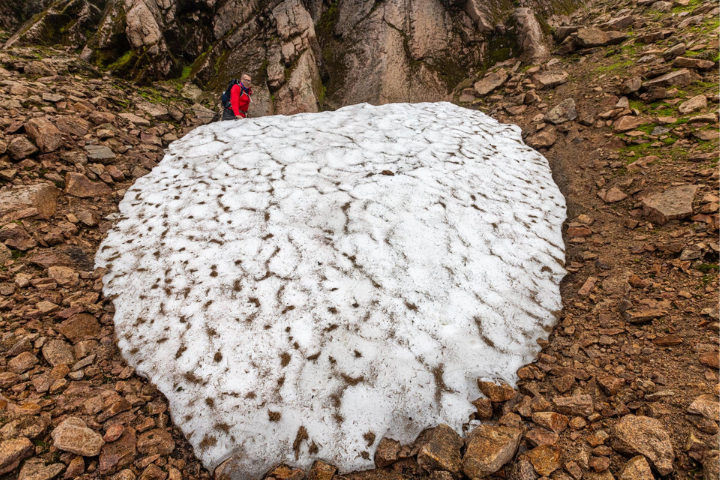In a poignant testament to Scotland’s changing climate, snow expert Iain Cameron warns that the days of Scotland’s “permanent” snow patches may be drawing to a close. Cameron, author of The Vanishing Ice: Diaries of a Scottish Snow Hunter, has devoted over 25 years to studying snow patterns across Scotland’s hills and mountains, publishing his findings in the Royal Meteorological Society’s annual reports.
Last year, he noted that the Sphinx—a revered, long-lasting snow patch in the Cairngorms—faces a bleak future, with “little prospect of a happy ending.” Cameron observed that what was once described as a “permanent” fixture has dwindled through various classifications, each less certain than the last, as the snow cover’s future grows increasingly uncertain under rising temperatures.
The Decline of Permanent Snow Patches in Scotland
Scotland’s once “permanent” snow patches are diminishing at an alarming rate, a shift well-documented by Iain Cameron in his extensive studies. Formerly thought of as lasting features of the Scottish landscape, these patches are becoming rare.
The Sphinx, one of the most notable patches, was once a symbol of enduring winter, but today it struggles to maintain its form as each season passes. This change reflects a broader shift in climate, where what was once dependable is now subject to the whims of a warming world.
As Cameron observes, even the language used to describe Scotland’s snow has evolved. What was once called “permanent” has now been replaced with terms like “semi-permanent” and “perennial,” until finally, even “semi-perennial” seems inadequate.
The implication is that Scotland’s snow may become an occasional feature, reducing not only the country’s winter character but also potentially impacting the ecosystems and species that depend on these cold pockets for survival.
Climate Change and the Enduring Sphinx
The story of The Sphinx snow patch serves as a striking example of climate change’s impact on Scotland’s landscape. For generations, this patch was considered an enduring part of the Cairngorm Mountains, a resilient snow remnant that withstood seasonal variations.
However, as Iain Cameron notes, the Sphinx now faces an uncertain future, one where its survival is a rare outcome rather than an expectation. Each year, the Sphinx becomes more vulnerable to summer melt, further eroding its longevity.
Cameron’s observations point to a wider phenomenon that extends beyond the Sphinx. As global temperatures rise, Scotland’s highlands are unable to preserve the same snow cover that once blanketed them year-round.
The loss of these snow patches not only alters Scotland’s iconic landscapes but also signals a shift in global climate patterns, bringing heightened awareness to the warming effects even in traditionally cold regions.




GIPHY App Key not set. Please check settings